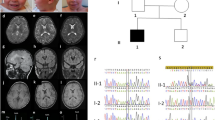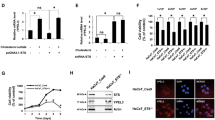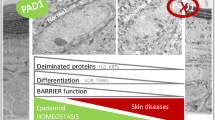Abstract
Sjögren–Larsson syndrome (SLS) is an autosomal recessive neurocutaneous disorder caused by mutation in the ALDH3A2 gene that codes for human fatty aldehyde dehydrogenase (FALDH). Sjögren–Larsson syndrome patients lack FALDH, which catalyzes the oxidation of long-chain aliphatic aldehydes to fatty acids. The impaired FALDH activity leads to congenital ichthyosis, mental retardation and spasticity. The current lack of treatment is an impetus to develop gene therapy strategies by introducing functional FALDH into defective cells. We delivered human FALDH into keratinocytes of SLS patients using recombinant adeno-associated virus-2 vectors. Transduction of SLS keratinocytes resulted in an augmentation of FALDH activity comparable to phenotypically normal heterozygous carriers. Toxicity of long-chain aldehydes for FALDH-deficient cells decreased almost to the level of unaffected keratinocytes. Three-dimensional culture of corrected SLS keratinocytes revealed an ameliorated FALDH expression. These studies demonstrate the restoration of FALDH in human SLS cells supporting the concept of gene therapy as a potential future treatment option for SLS.
This is a preview of subscription content, access via your institution
Access options
Subscribe to this journal
Receive 12 print issues and online access
$259.00 per year
only $21.58 per issue
Buy this article
- Purchase on Springer Link
- Instant access to full article PDF
Prices may be subject to local taxes which are calculated during checkout




Similar content being viewed by others
Accession codes
References
Rizzo WB . Sjögren–Larsson syndrome. Semin Dermatol 1993; 12: 210–218.
Rizzo WB, Craft DA . Sjögren–Larsson syndrome. Deficient activity of the fatty aldehyde dehydrogenase component of fatty alcohol:NAD+ oxidoreductase in cultured fibroblast. J Clin Invest 1991; 88: 1643–1648.
Rizzo WB, Lin Z, Carney G . Fatty aldehyde dehydrogenase: genomic structure, expression and mutation analysis in Sjögren–Larsson syndrome. Chem Biol Interact 2001; 130–132: 297–307.
Pigg M, Jagell S, Sillén A, Weissenbach J, Gustavson K-H, Wadelius C . The Sjögren–Larsson syndrome gene is close to D17S805 as determined by linkage analysis and allelic association. Nat Genet 1994; 8: 361–364.
De Laurenzi V, Rogers GR, Hamrock DJ, Marekov LN, Steinert PM, Compton JG et al. Sjögren–Larsson syndrome is caused by mutations in the fatty aldehyde dehydrogenase gene. Nat Genet 1996; 12: 52–57.
Carney G, Wei S, Rizzo WB . Sjögren–Larsson syndrome: seven novel mutations in the fatty aldehyde dehydrogenase gene ALDH3A2. Hum Mutat 2004; 24: 186.
Rizzo WB, Carney G, Lin Z . The molecular basis of Sjögren–Larsson syndrome: mutation analysis of fatty aldehyde dehydrogenase gene. Am J Hum Genet 1999; 65: 1547–1560.
Jagell S, Liden S . Treatment of the ichthyosis of the Sjögren–Larsson syndrome with etretinate (Tigason). Acta Derm Venereol 1983; 63: 89–91.
Willemsen MA, Lutt MA, Steijlen PM, Cruysberg JR, van der Graaf M, Nijhuis-van der Sanden MW et al. Clinical and biochemical effects of zileuton in patients with the Sjögren–Larsson syndrome. Eur J Pediatr 2001; 160: 711–717.
Taube B, Billeaud C, Labrèze C, Entressangles B, Fontan D, Taieb A . Sjögren–Larsson syndrome: early diagnosis, dietry management and biochemical studies in two cases. Dermatology 1999; 198: 340–345.
Haug S, Braun-Falco M . Adeno-assoicated virus vectors are able to restore fatty aldehyde dehydrogenase-deficiency. Implications for gene therapy in Sjögren–Larsson syndrome. Arch Dermatol Res 2005; 296: 568–572.
Braun-Falco M, Doenecke A, Smola H, Hallek M . Efficient gene transfer into human keratinocytes with recombinant adeno-associated virus vectors. Gene Therapy 1999; 6: 432–441.
Kelson TL, Craft DA, Rizzo WB . Carrier detection for Sjögren–Larsson syndrome. J Inherit Metab Dis 1992; 15: 105–111.
James PF, Zoeller RA . Isolation of animal cell mutants defective in long-chain fatty aldehyde dehydrogenase. J Biol Chem 1997; 272: 23532–23539.
Rikimaru K, Molès J-P, Watt FM . Correlation between hyperproliferation and suprabasal integrin expression in human epidermis reconstituted in culture. Exp Dermatol 1997; 6: 214–221.
Judge MR, Lake BD, Smith VV, Besley GTN, Harper JI . Depletion of alcohol (hexanol) dehydrogenase activity in the epidermis and jejunal mucosa in Sjögren–Larsson syndrome. J Invest Dermatol 1990; 95: 632–634.
Lake BD, Smith VV, Judge MR, Harper JI, Besley GTN . Hexanol dehydrogenase activity shown by enzyme histochemistry on skin biopsies allows differentiation of Sjögren–Larsson syndrome from other ichthyoses. J Inherit Metab Dis 1991; 14: 338–340.
Buning H, Braun-Falco M, Hallek M . Progress in the use of adeno-associated viral vectors for gene therapy. Cells Tissues Organs 2004; 17: 39–50.
Crystal RG, Sondhi D, Hackett NR, Kaminsky SM, Worgall S, Stieg P et al. Clinical protocol. Administration of a replication-deficient adeno-associated virus gene transfer vector expressing the human CLN2 cDNA to the brain of children with late infantile neuronal ceroid lipofuscinosis. Hum Gene Ther 2004; 15: 1131–1154.
Manno CS, Chew AJ, Hutchison S, Larson PJ, Herzog RW, Arruda VR et al. AAV-mediated factor IX gene transfer to skeletal muscle in patients with severe hemophilia B. Blood 2003; 101: 2963–2972.
Braun-Falco M, Eisenried A, Buning H, Ring J . Recombinant adeno-associated virus type 2-mediated gene transfer into human keratinocytes is influenced by both ubiquitin/proteasome pathway and epidermal growth factor-receptor tyrosine kinase. Arch Dermatol Res 2005; 296: 528–535.
Watt FM . Epidermal stem cells as targets for gene therapy. Hum Gene Ther 2000; 11: 2261–2266.
Christensen R, Jensen UB, Jensen TG . Skin genetically engineered as a bioreactor or a metabolic sink. Cells Tissue Organs 2002; 172: 96–104.
Hermann T, van der Hoeven F, Gröne H-J, Stewart AF, Langbein L, Kaiser I et al. Mice with targeted disruption of the fatty acid transport protein 4 (Fatp 4, Slc27a4) gene show features of lethal restrictive dermopathy. J Cell Biol 2003; 161: 1105–1115.
Kuramoto N, Takizawa T, Takizawa T, Matsuki M, Morioka H, Robinson JM et al. Development of ichthyosiform skin compensates for defective permeability barrier function in mice lacking transglutaminase 1. J Clin Invest 2002; 109: 243–250.
Hewett DR, Simons AL, Mangan NE, Jolin HE, Green SM, Fallon PG et al. Lethal, neonatal ichthyosis with increased proteolytic processing of filaggrin in a mouse model of Netherton syndrome. Hum Mol Genet 2005; 14: 335–346.
Xiao X, Li J, Samulski RJ . Production of high-titer recombinant adeno-associated virus vectors in the absence of helper adenovirus. J Virol 1998; 72: 2224–2232.
Zolotukhin S, Byrne BJ, Mason E, Zolotukhin I, Potter M, Chesnut K et al. Recombinant adeno-associated virus purification using novel methods improves infectious titer and yield. Gene Therapy 1999; 6: 973–985.
Kelson TL, Secor McVoy JR, Rizzo WB . Human liver fatty aldehyde dehydrogenase: microsomal localization, purification, and biochemical characterization. Biochim Biophys Acta 1997; 1335: 99–110.
Acknowledgements
This work was supported by grants of the Wilhelm-Sander Stiftung (2003.117.1), Munich, Germany, and funds of the KKF, Klinikum Rechts der Isar, Technical University Munich, Germany. Work presented in this publication was performed as part of the doctoral thesis of SH.
Author information
Authors and Affiliations
Corresponding author
Rights and permissions
About this article
Cite this article
Haug, S., Braun-Falco, M. Restoration of fatty aldehyde dehydrogenase deficiency in Sjögren–Larsson syndrome. Gene Ther 13, 1021–1026 (2006). https://doi.org/10.1038/sj.gt.3302743
Received:
Revised:
Accepted:
Published:
Issue Date:
DOI: https://doi.org/10.1038/sj.gt.3302743
Keywords
This article is cited by
-
New developments in the molecular treatment of ichthyosis: review of the literature
Orphanet Journal of Rare Diseases (2022)
-
Sjögren–Larsson syndrome in clinical practice
Journal of Inherited Metabolic Disease (2012)



